Just consider the increasing velocity of technological innovation and change and how it has shaped our lives in the last 20 years, says noted astrophysicist, futurist, and author Neil deGrasse Tyson in kicking off the 2024 NBAA Business Aviation Convention & Exhibition (NBAA-BACE) in Las Vegas.
About 19,000 attendees visited 8,000 exhibitors between the Las Vegas Convention Centre and Henderson airport, the static display with business aircraft on display.
It was an auspicious start for the Advanced Air Mobility (AAM) sector, comprised of the new generation of electric air-taxi makers such as Joby Aviation, Archer, and Lilium. These firms have had limited displays at past NBAA shows, but yesterday was more like a formal coming-of-age party for the fledgling sector.
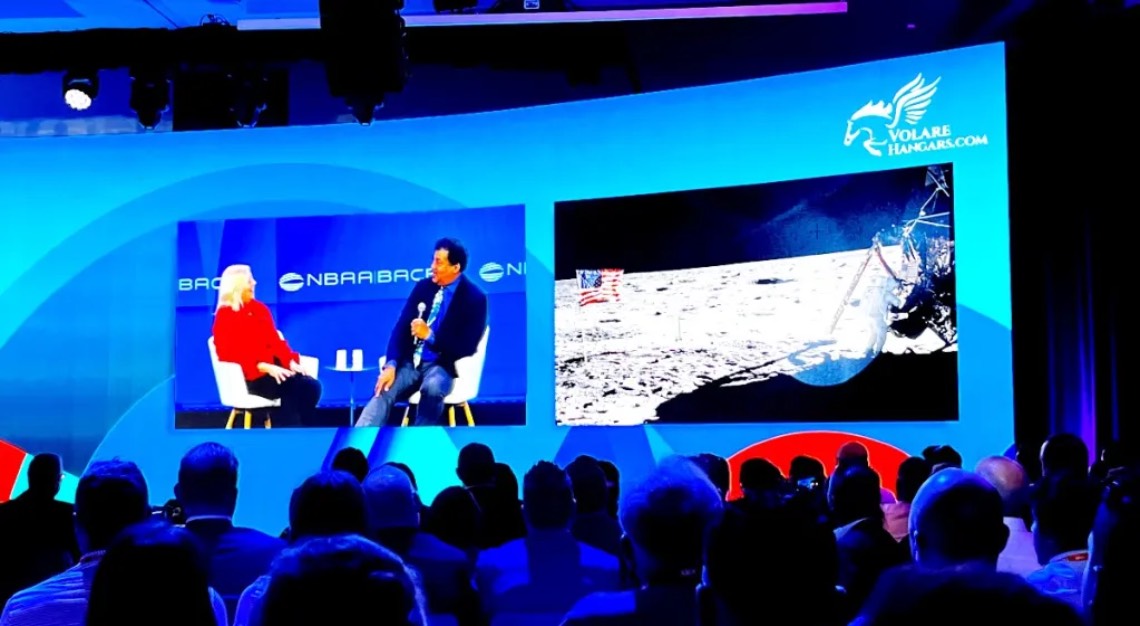
During the keynote, Bonnie Simi—pilot, former Olympic athlete, and Joby Aviation’s president of operations—interviewed Tyson about the pace of technology as well as the future of the Advanced Air Mobility movement (AAM), which includes electric air taxis.
Tyson told the packed hall that history reminds us that innovations come from places you don’t often expect. Take the iPhone, he said. Apple didn’t invent GPS, music, or cellular communications, but the company assembled the technologies to create one of the most transformative devices in the history of inventions, the astrophysicist explained.
Aviation is entering a similar innovative period with advanced air mobility, efficiency, and sustainability, added NBAA president and CEO Ed Bolen, who also addressed the audience during the keynote. Bolen discussed the pace of aviation advancement with FAA’s administrator Michael Whitaker, who was on hand to sign a Special Federal Aviation Regulation (SFAR) establishing the final rule for a regulatory framework for the new category of eVTOL (electric vertical takeoff and landing) aircraft.
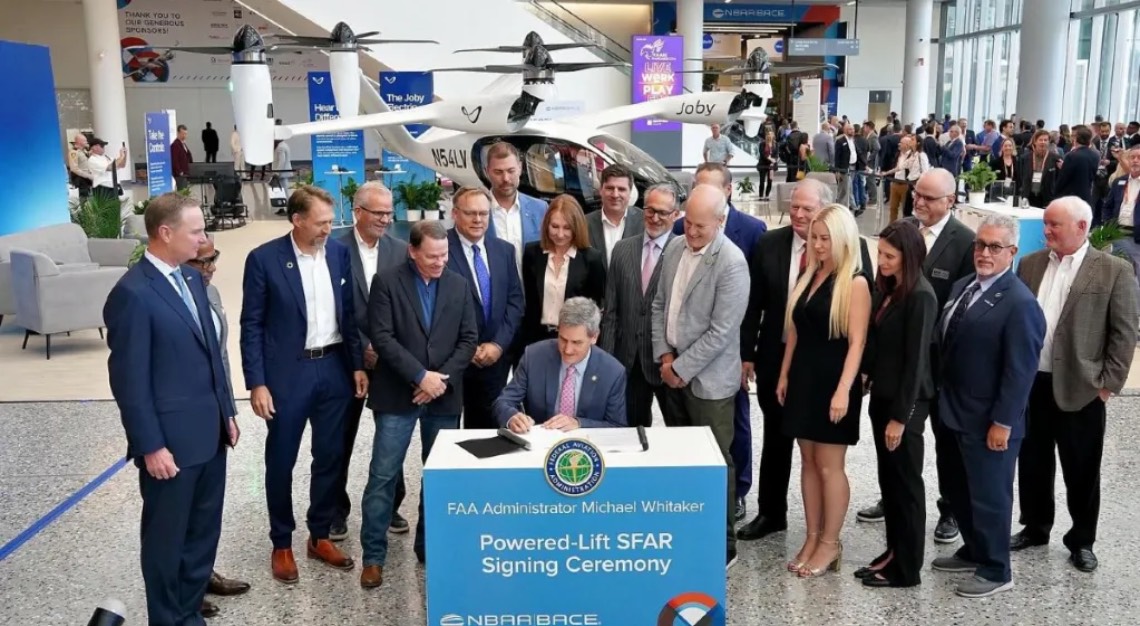
“It is an extraordinary moment in history,” Whitaker said, noting that AAM represents an entirely new aircraft category, typically involving a combination of rotor and fixed-wing aircraft.
The FAA also recognises that you can’t certify an aircraft and do not have a way to operate it as intended, Whitaker added. This final rule creates the blueprint for integrating this technology and modeling an ecosystem for operations. “I don’t know the last time we went from an idea to a final rule in 16 months,” said Whitaker, who has had a long history working with both the FAA and aviation, including a stint at eVTOL maker Supernal. “That is light speed for rulemaking.”
The final rule, he explained, creates a flexible climate for companies to train pilots, operate these aircraft, and safely integrate new technology.
AAM represents a “seminal moment” in aviation to help achieve net zero by 2050, Bolen says. “Over the last 40 years, the industry has been able to shrink its environmental footprint by 40 per cent,” he added. “Every aircraft is 25 to 30 per cent more efficient than its replacement aircraft. The industry has invested significantly in developing sustainable aviation fuels and advancements with electric, hydrogen, and hybrid propulsion systems.
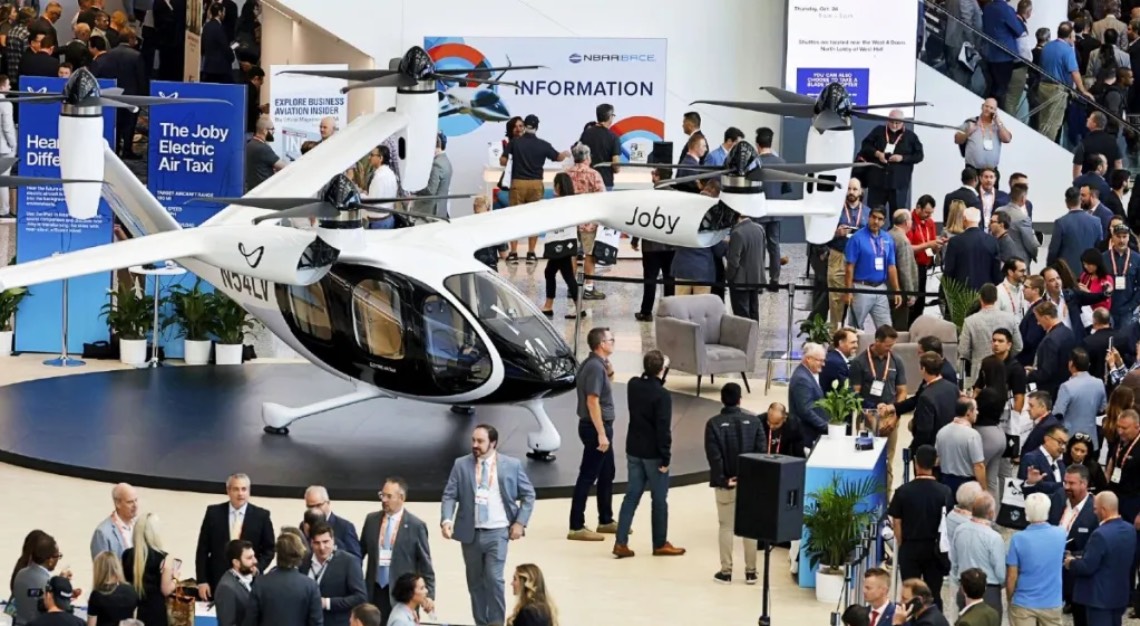
One of the regulatory challenges, Whitaker added, is that the FAA doesn’t yet know how the business model will evolve. “Will this require departures every three minutes to the airport or primarily serve rural communities?” he asked, citing two possible futures for electric aircraft. “We need the regulatory flexibility to allow AAM businesses to succeed and do so safely.”
The topic was explored during a seminar on how advanced air mobility infrastructure will develop yesterday. Beta CEO Kyle Clarke, which makes eVTOLs, said his firm had built charging stations in airports across different states, with the goal of creating 150 charging facilities across the country.
Signature Aviation CEO Tony Lefebvre envisions significantly more infrastructure will be needed, so “we have the proper infrastructure to be able to support 600, 700, 800 locations—or coming up with alternatives, so that the [aircraft] can continue to fly out of one location and then reposition for charging,” he said, adding that development could happen at “an accelerated pace.”
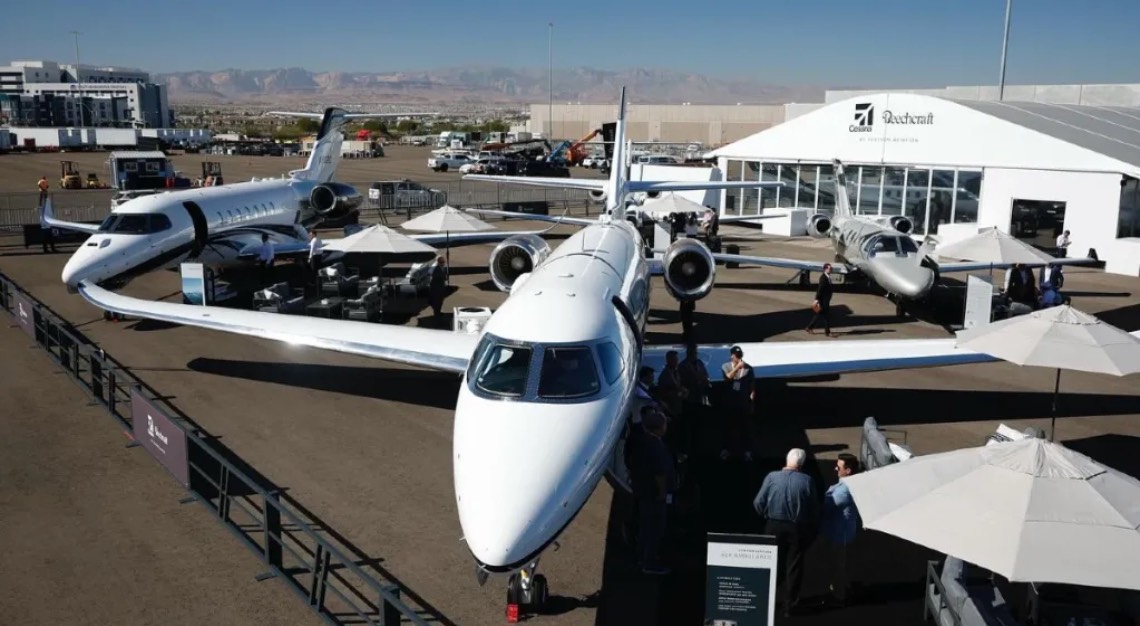
From the future, NBAA looked to the past, recognising Laurent and Pierre Beaudoin, the father-and-son team who have led Bombardier for more than 60 years with NBAA’s Meritorious Service to Aviation Award.
Since its beginnings in rural Quebec making snowmobiles, Bombardier has grown into an US$8 billion global leader in business aviation. In 1966, Laurent became company president and took the the brand public in 1969. He diversified beyond snowmobiles by purchasing a train manufacturer in 1970, and purchased Canadair in 1986, which was the leading manufacturer of Challenger wide-body business jets, to become part of the aviation industry.
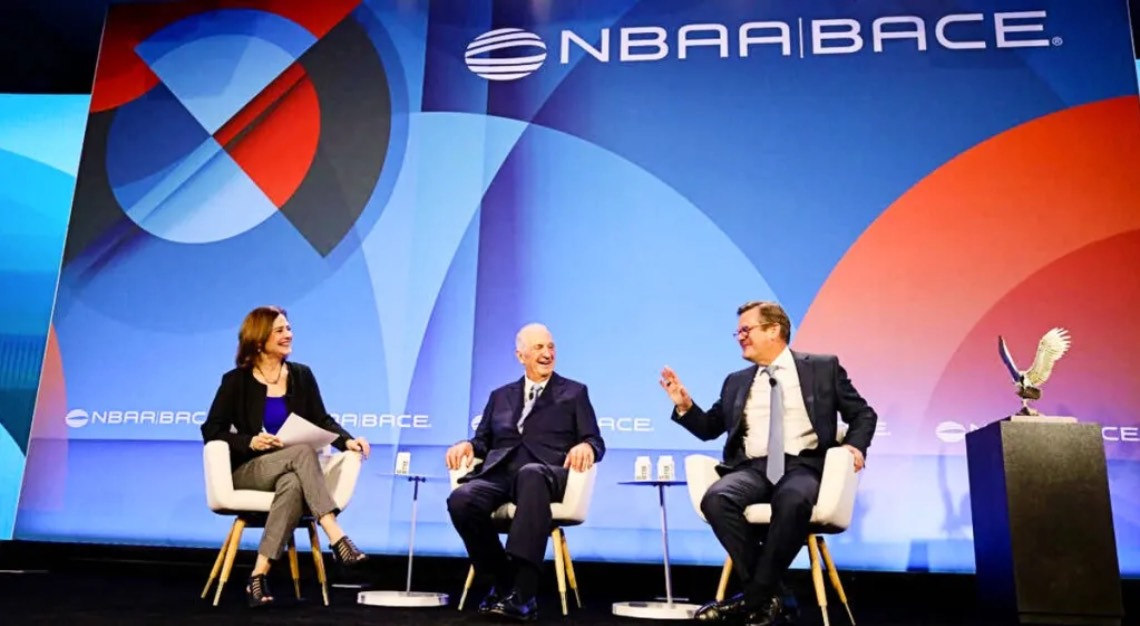
“Canadair was a big entrée into aviation, but we were fortunate to have the engineering staff in place,” Laurent told Robb Report. “The only thing they lacked was an entrepreneurial spirit and we were able to introduce that into the company.” Through his career, he also focused heavily on product design. “That’s always been important to me,” Laurent says. “Beyond it functioning, why shouldn’t it look attractive? Our aircraft look fast, even when they are sitting on a runway, they look like they want to go.”
In 2020, Bombardier sold off its railway business, becoming solely a business jet manufacturer, with multiple aircraft types across different categories, including its new flagship aircraft, the ultra-long-range Global 8000. “We still see a lot of upside for our company in this industry,” said Pierre. “The service business is one—there are a lot of aging aircraft out there, and we are also moving into military applications with our business jets. We see a very bright future there.”
The company remains focused on future aircraft. It has developed a blended-wing EcoJet Research Project to study and improve aerodynamics and propulsion efficiencies to reduce business jet emissions by up to 50 per cent. “There are a lot of things being said about sustainability that are not always fact based,” said Laurent. “The EcoJet Project is an example of how we are going to study the things we can do to make a huge impact to reach that goal.”




